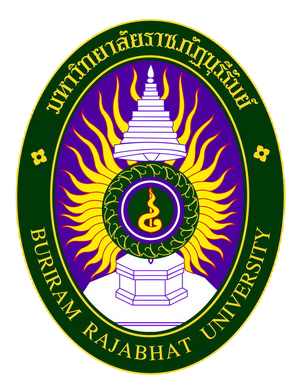Determinants of Google’s Gemini AI Chatbot Adoption Among Higher Education Students in Bangkok, Thailand
คำสำคัญ:
Google’s Gemini, Artificial Intelligence (AI), Chatbots, Higher Educationบทคัดย่อ
This study aims to examine the determinants influencing the intention to use the AI chatbot, like Gemini, among higher education students in Bangkok, Thailand. The research focuses on the perceptions and attitudes of Thai higher education students towards Gemini, evaluating factors such as perceived usefulness, perceived ease of use, attitude towards Gemini, privacy and security concerns, and facilitating conditions. A quantitative research approach was employed, collecting data from 385 students through online closed-ended questionnaires designed with a five-point Likert Scale. The data were analyzed using descriptive statistics to outline respondent characteristics and inferential statistics to test hypotheses and ascertain relationships between variables. The findings revealed that perceived usefulness and facilitating conditions are significant positive predictors of the intention to use Gemini, while privacy and security concerns also show an unexpectedly positive influence. Conversely, perceived ease of use and attitude towards Gemini do not significantly impact usage intentions. The study underscores the importance of demonstrating practical benefits and providing adequate support to enhance AI chatbot adoption in educational settings, while effectively addressing privacy and security concerns to further encourage usage. These insights offer valuable guidance for educators, policymakers, and technology developers aiming to integrate AI tools like Gemini into higher education.
References
Abbad, M. M. (2021). Using the UTAUT model to understand students’ usage of e-learning systems in developing countries. Education and Information Technologies, 26(6), 7205-7224. https://doi.org/10.1007/s10639-021-10573-5
Al-Adwan, A. S., Li, N., Al-Adwan, A., Abbasi, G. A., Albelbisi, N. A., & Habibi, A. (2023). Extending the technology acceptance model (TAM) to predict university students’ intentions to use metaverse-based learning platforms. Education and Information Technologies, 28(11), 15381-15413. https://doi.org/10.1007/s10639-023-11816-3
Al-Emran, M., Mezhuyev, V., & Kamaludin, A. (2018). Technology Acceptance Model in m-learning context: A systematic review. Computers & Education, 125, 389-412. https://doi.org/10.1016/j.compedu.2018.06.008
Arpaci, I., Kilicer, K., & Bardakci, S. (2015). Effects of security and privacy concerns on educational use of cloud services. Computers in Human Behavior, 45, 93-98. https://doi.org/10.1016/j.chb.2014.11.075
Bélanger, F., & Crossler, R. E. (2011). Privacy in the digital age: A review of information privacy research in information systems. MIS Quarterly, 35(4), 1017-1042. https://doi.org/10.2307/41409971
Chen, L., Chen, P., & Lin, Z. (2020). Artificial intelligence in education: A review. IEEE Access, 8, 75264-75278. https://doi.org/10.1109/ACCESS.2020.2988510
Davis, F. D. (1989). Perceived usefulness, perceived ease of use, and user acceptance of information technology. MIS Quarterly, 13(3), 319-340. https://doi.org/10.2307/249008
Fishbein, M., & Ajzen, I. (1975). Belief, attitude, intention, and behavior: An introduction to theory and research. Addison-Wesley. https://lib.ugent.be/en/catalog/rug01:000839739
Granić, A., & Marangunić, N. (2019). Technology acceptance model in educational context: A systematic literature review. British Journal of Educational Technology, 50(5), 2572-2593. https://doi.org/10.1111/bjet.12864
Igbokwe, I. C. (2023). Application of artificial intelligence (AI) in educational management. International Journal of Scientific and Research Publications, 13(3), 300-307. http://dx.doi.org/10.29322/IJSRP.13.03.2023.p13536
Imran, M., & Almusharraf, N. (2024). Google Gemini as a next generation AI educational tool: A review of emerging educational technology. Smart Learning Environments, 11, 22. https://doi.org/10.1186/s40561-024-00310-z
Kamalov, F., Calonge, D. S., & Gurrib, I. (2023). New era of artificial intelligence in education: Towards a sustainable multifaceted revolution. Sustainability, 15(16), 12451. https://doi.org/10.3390/su151612451
Khechine, H., Raymond, B., & Augier, M. (2020). The adoption of a social learning system: Intrinsic value in the UTAUT model. British Journal of Educational Technology, 51(6), 2306-2325. https://doi.org/10.1111/bjet.12905
King, W. R., & He, J. (2006). A meta-analysis of the technology acceptance model. Information & Management, 43(6), 740-755. https://doi.org/10.1016/j.im.2006.05.003
Labadze, L., Grigolia, M., & Machaidze, L. (2023). Role of AI chatbots in education: Systematic literature review. International Journal of Educational Technology in Higher Education, 20(1), 56. https://doi.org/10.1186/s41239-023-00426-1
Lai, P. (2013). The literature review of technology adoption models and theories for the novelty technology. Journal of Information Systems and Technology Management, 10(1), 21-38. https://doi.org/10.4301/S1807-17752013000100002
Lutz, C. (2019). Digital inequalities in the age of artificial intelligence and big data. Human Behavior and Emerging Technologies, 1(2), 141-148. https://doi.org/10.1002/hbe2.140
Lwin, M., Wirtz, J., & Williams, J. D. (2007). Consumer online privacy concerns and responses: A power–responsibility equilibrium perspective. Journal of the Academy of Marketing Science, 35, 572-585. https://doi.org/10.1007/s11747-006-0003-3
Namraksa, S., & Kraiwanit, T. (2024). Factors influencing the selection of international schools in Thailand's educational landscape amidst the digital economy. In RSU International Research Conference 2024 on Social Science and Humanities, Education, and Management (pp. 213-223). Pathum Thani: Rangsit University. https://rsucon.rsu.ac.th/proceeding/article/3390
Perera, P., & Lankathilake, M. (2023). Preparing to revolutionize education with the multi-model GenAI tool Google Gemini? A journey towards effective policy making. Journal of Advances in Education and Philosophy, 7(8), 246-253. https://saudijournals.com/media/articles/JAEP_78_246-253.pdf
Rad, D., Egerau, A., Roman, A., Dughi, T., Balas, E., Maier, R., Ignat, S., & Rad, G. (2022). A preliminary investigation of the technology acceptance model (TAM) in early childhood education and care. BRAIN. Broad Research in Artificial Intelligence and Neuroscience, 13(1), 518-533. https://doi.org/10.18662/brain/13.1/297
Rafique, H., Almagrabi, A. O., Shamim, A., Anwar, F., & Bashir, A. K. (2020). Investigating the acceptance of mobile library applications with an extended technology acceptance model (TAM). Computers & Education, 145, 103732. https://doi.org/10.1016/j.compedu.2019.103732
Saif, N., Khan, S. U., Shaheen, I., ALotaibi, F. A., Alnfiai, M. M., & Arif, M. (2024). Chat-GPT; validating Technology Acceptance Model (TAM) in education sector via ubiquitous learning mechanism. Computers in Human Behavior, 154, 108097. https://doi.org/10.1016/j.chb.2023.108097
Teo, T. (2010). Development and validation of the E-learning Acceptance Measure (ElAM). Internet and Higher Education, 13(3), 148-152. https://doi.org/10.1016/j.iheduc.2010.02.001
Teo, T. (2011). Factors influencing teachers’ intention to use technology: Model development and test. Computers & Education, 57(4), 2432-2440. https://doi.org/10.1016/j.compedu.2011.06.008
Teo, T., & Noyes, J. (2014). Explaining the intention to use technology among pre-service teachers: A multi-group analysis of the Unified Theory of Acceptance and Use of Technology. Interactive Learning Environments, 22(1), 51-66. https://doi.org/10.1080/10494820.2011.641674
Vanduhe, V. Z., Nat, M., & Hasan, H. F. (2020). Continuance intentions to use gamification for training in higher education: Integrating the technology acceptance model (TAM), social motivation, and task technology fit (TTF). IEEE Access, 8, 21473-21484. https://doi.org/10.1109/ACCESS.2020.2966179
Venkatesh, V., & Davis, F. D. (2000). A theoretical extension of the technology acceptance model: Four longitudinal field studies. Management Science, 46(2), 186-204. https://doi.org/10.1287/mnsc.46.2.186.11926
Venkatesh, V., Morris, M. G., Davis, G. B., & Davis, F. D. (2003). User acceptance of information technology: Toward a unified view. MIS Quarterly, 27(3), 425-478. https://doi.org/10.2307/30036540
Vinitpittayakul, K. (2023). The studies of influencing factors to technology acceptance use in online instruction. Rajamangala University of Technology Tawan-Ok Social Science Journal, 12(2), 119-126. https://so05.tci-thaijo.org/index.php/SocialJournal2rmutto/article/view/251578
Winkler, R., & Söllner, M. (2018). Unleashing the potential of chatbots in education: A state-of-the-art analysis. Proceedings of the Americas Conference on Information Systems (AMCIS 2018), 1-10.
Wong, W. K. O. (2024). The sudden disruptive rise of generative artificial intelligence? An evaluation of their impact on higher education and the global workplace. Journal of Open Innovation: Technology, Market, and Complexity, 10(2), 100278. https://doi.org/10.1016/j.joitmc.2024.100278
Yalcin, M. E., & Kutlu, B. (2019). Examination of students' acceptance of and intention to use learning management systems using extended TAM. British Journal of Educational Technology, 50(5), 2414-2432. https://doi.org/10.1111/bjet.12798
Zhou, T. (2011). Understanding online community user participation: A social influence perspective. Internet Research, 21(1), 67-81. https://doi.org/10.1108/10662241111104884
Downloads
เผยแพร่แล้ว
ฉบับ
บท
License
Copyright (c) 2024 วารสารสหวิทยาการจัดการ มหาวิทยาลัยราชภัฏบุรีรัมย์

This work is licensed under a Creative Commons Attribution-NonCommercial-NoDerivatives 4.0 International License.
ลิขสิทธิ์ ในการตีพิมพ์บทความ
จะโชว์ตอนที่ ผู้ส่งบทความ ตีพิมพ์ ต้องกด accept






